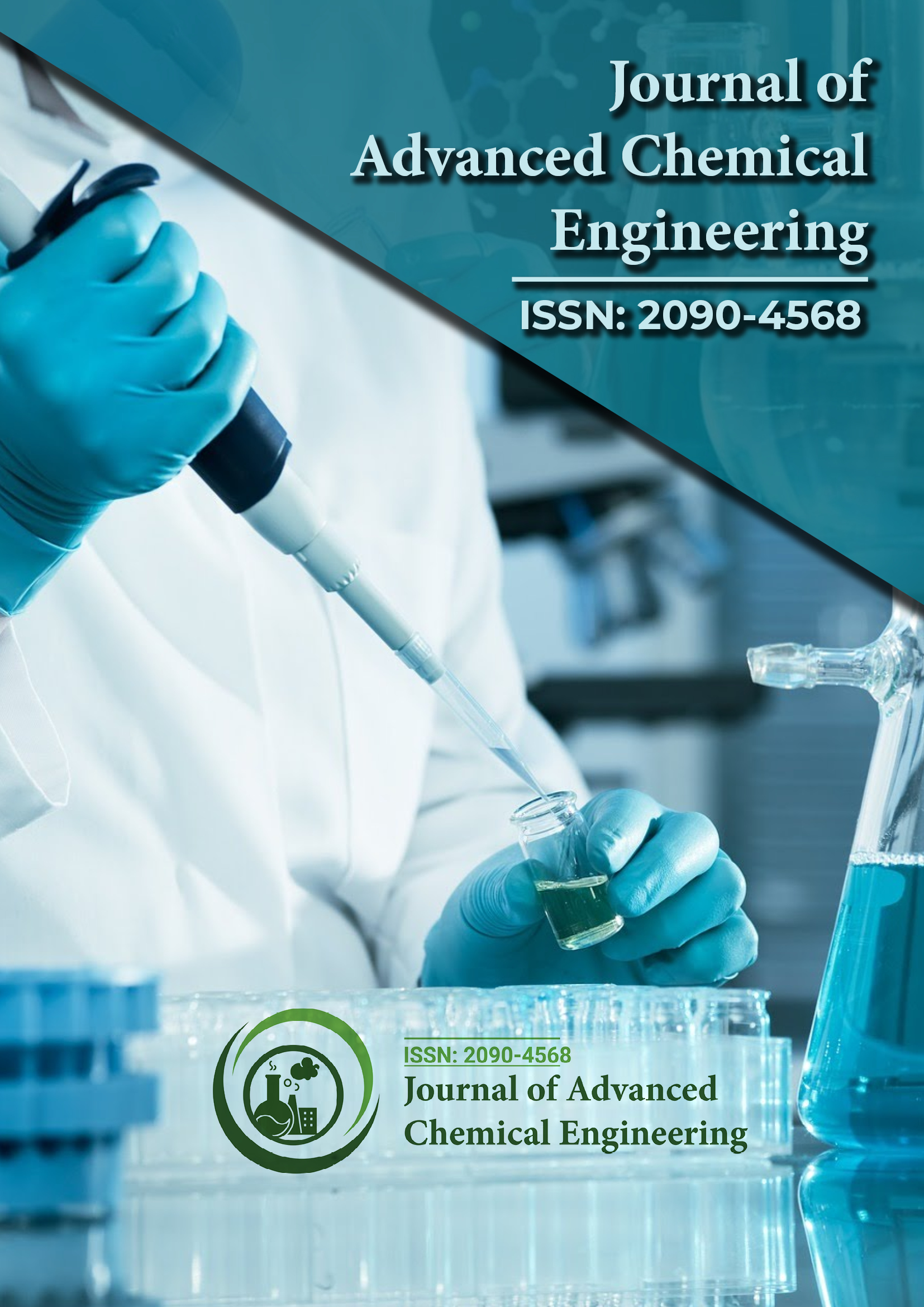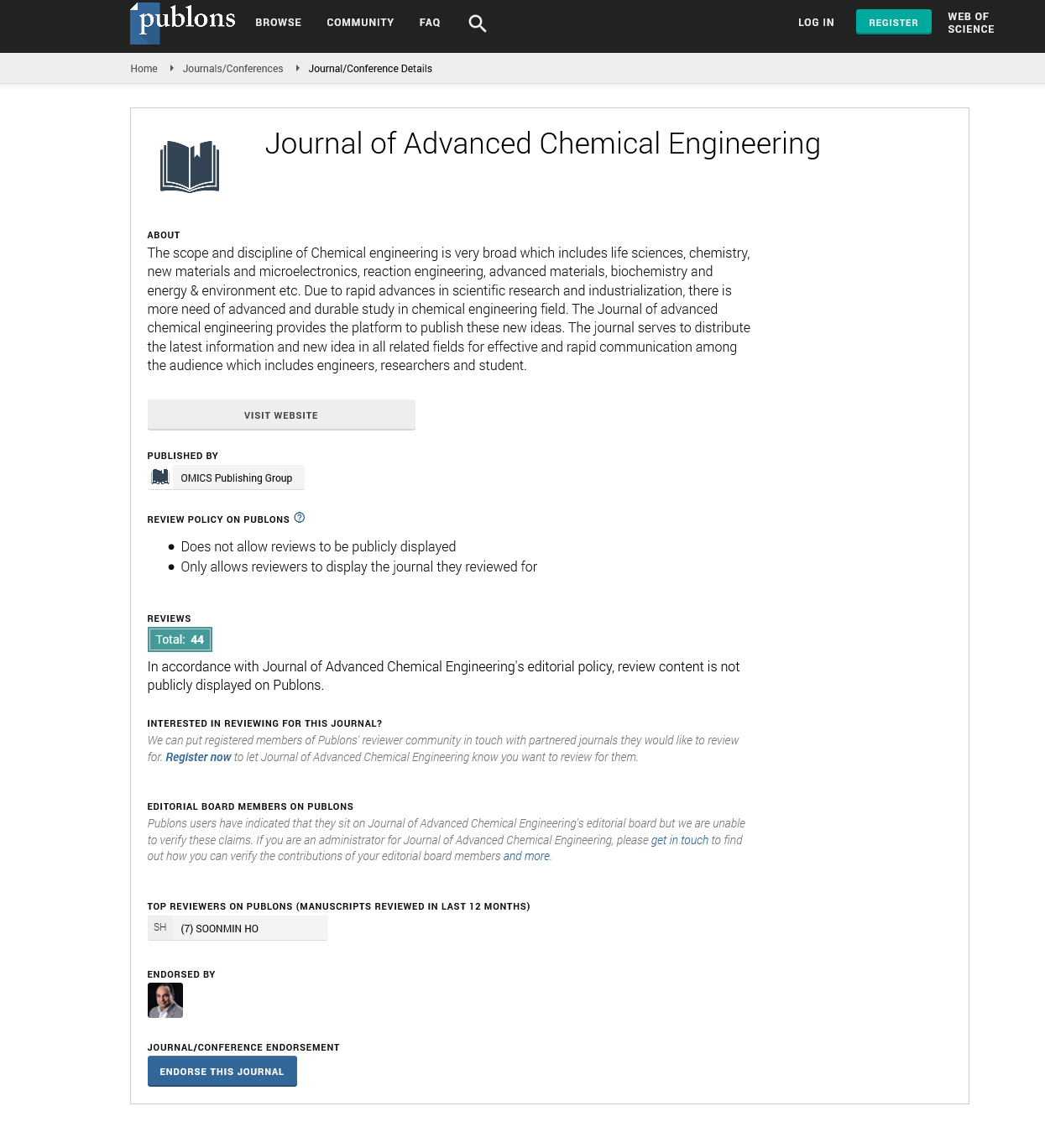Indexed In
- Open J Gate
- Genamics JournalSeek
- Smithers Rapra
- RefSeek
- Directory of Research Journal Indexing (DRJI)
- Hamdard University
- EBSCO A-Z
- OCLC- WorldCat
- Scholarsteer
- Publons
- Geneva Foundation for Medical Education and Research
- Google Scholar
Useful Links
Share This Page
Journal Flyer

Open Access Journals
- Agri and Aquaculture
- Biochemistry
- Bioinformatics & Systems Biology
- Business & Management
- Chemistry
- Clinical Sciences
- Engineering
- Food & Nutrition
- General Science
- Genetics & Molecular Biology
- Immunology & Microbiology
- Medical Sciences
- Neuroscience & Psychology
- Nursing & Health Care
- Pharmaceutical Sciences
Construction of a solid-state overall water-splitting photocatalyst, sensitive to red-light for solar hydrogen production
6th Asia Pacific Congress on Chemical and Biochemical Engineering
September 17-18, 2018 Hong Kong
Hiroshi Irie
University of Yamanashi, Japan
Scientific Tracks Abstracts: J Adv Chem Eng
Abstract:
Various photocatalytic materials aiming at water-splitting have been enthusiastically investigated because produced hydrogen (H2) is attractive as a clean and renewable fuel. To date, one of the candidate methods to split water to H2 and oxygen (O2) at a ratio of 2:1 under visible light is a combined system of half reaction photocatalysts, that is, H2-evolution and O2-evolution photocatalysts. However, because such the combination system, which is termed Z-scheme, requires a suitable redox couple, the system is not in fact able to split pure water. For the practical application, splitting pure water with no added chemicals is presumed to be favorable. Recently, we reported an Ag-inserted solid-state hetero-junction photocatalyst for water-splitting under visible light, like a Z-scheme system but is not required for a redox mediator. So, this system is capable of splitting pure water. In this system, Ag acts as a solid electron mediator for water-splitting. We selected ZnRh2O4 (band-gap (E.g. 1.2 eV) and AgSbO3 (E.g. 2.5 eV) as H2- and O2-evolution photocatalysts, respectively. The system was able to respond to visible light up to 545 nm depending on the photo-absorption capability of AgSbO3 (in fact, defective AgSbO3). So, we replaced AgSbO3 with Bi4V2O11 (E.g. 1.7 eV) as the O2-photocatalyst. Utilizing thus constructed Ag-inserted ZnRh2O4 and Bi4V2O11 photocatalyst, the simultaneous liberation of H2 and O2 from pure water at a stoichiometric ratio was achieved under irradiation with visible light up to wavelengths of 740 nm. In place of Ag, Au-inserted ZnRh2O4 and Bi4V2O11 photocatalyst was also able to accomplish overall pure-water-splitting under visible light up to 740 nm with improved activity.
Biography :
Hiroshi Irie has pursued his BE and ME degrees in Inorganic Materials Science from Tokyo Institute of Technology in 1992 and 1994, respectively. He had worked at Sumitomo Metal Industries, Ltd. as a Research Engineer. He had received his PhD degree from the University of Tokyo in the Department of Interdisciplinary Studies. He was a Research Staff Member at Kanagawa Academy of Science and Technology until 2001. He later joined the University of Tokyo as a Research Associate and became a Lecturer and an Associate Professor at the University of Tokyo in 2006 and 2008, respectively and then he was promoted to a Full Professor at Clean Energy Research Center in University of Yamanashi. His current research interests include creations of high-performance energy-conversion materials such as photocatalysts, thermoelectric materials and so on.
E-mail: hirie@yamanashi.ac.jp

